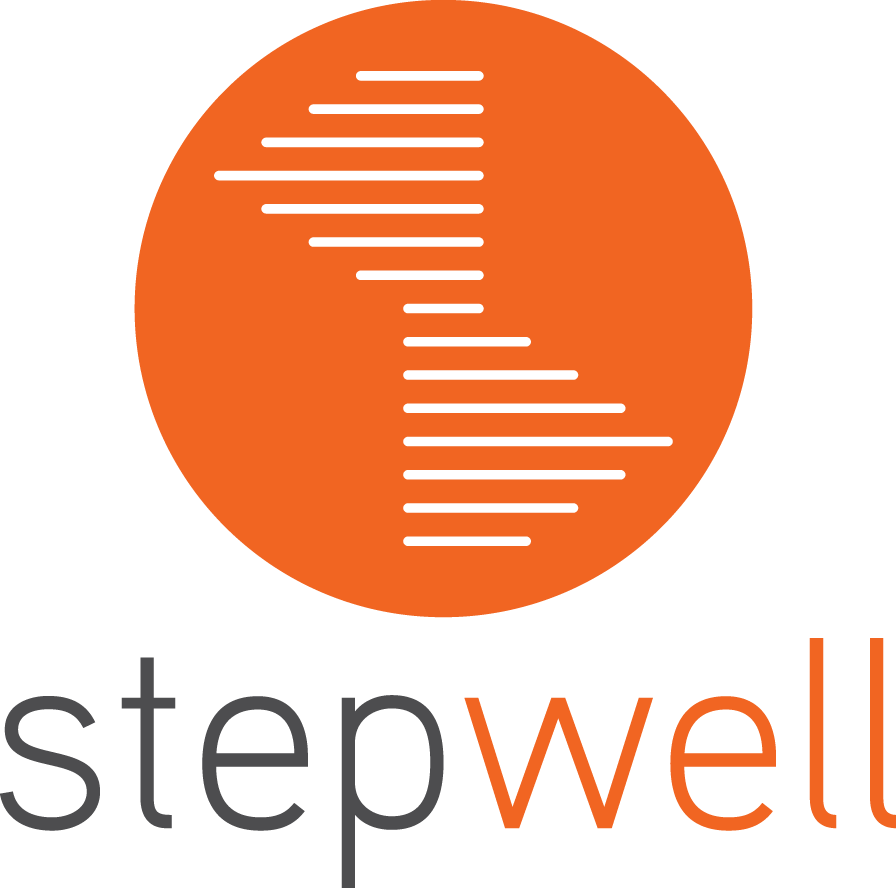In our journey to create Stepwell, our team has done a lot of thinking about the work that has to go into improving special education. While our platform focuses on streamlining compliance with the Individuals with Disabilities Education Act, our ultimate goal is to help schools improve the results of their special education programs. When we designed our logo, we made sure that it symbolized the different aspects of how we think about special education improvement.
The logo, combined with our name, is meant to conjure up images of a spiral staircase. We see spiral stairs as a metaphor for school improvement: constantly moving upward through cycles of progress. As education officials develop a plan they think will work, they must monitor student data to make sure they are getting the results they aimed for, going back to the drawing board when things aren’t working. By learning from their past efforts, they can get better and more efficient when they have a new challenge ahead of them.
While various states and organizations have slightly different approaches to driving and monitoring school improvement, our team has identified common steps that all education officials follow. This seven step process is reflected in the seven lines in each half of our logo.
1. Identify the Issue
Whether from reviewing data or investigating programs in person, education officials need to have a clear idea of what the issue is. Large-scale problems need to be refined down to individual actionable items so that everyone involved has a shared understanding of what problems they are working to fix.
2. Notify that correction is needed
Clearly communicating about the issue is important. More than just being notified, it is essential that all stakeholders clearly understand what the problem is and what their role is in fixing it.
3. Develop a Plan
By analyzing all the data and documentation that surrounds the issue, education officials can identify the root causes of the problem and develop an informed plan for how they will improve.
4. Implement the Plan
After everyone involved understands what needs to be done, they can get to work fixing the issue. With committed, coordinated effort from teachers and administrators, schools work to ensure students are receiving an appropriate education.
5. Report Progress
Instead of waiting until the plan is supposed to be finished, it is important for educators to note progress toward the successful completion of the planned actions and action steps throughout the implementation process. This gives them the ability to make adjustments where necessary to get the best results.
6. Verify Success
After an improvement plan has been implemented, there are important questions to answer: Do the district’s results show that they met their goal for improvement? If not, what still needs to change to get better? Did this process uncover other things that the district needs to work on?
7. Notify that the issue is closed or that it is uncorrected.
After understanding the results, state officials, district administrators and teachers all need to make sure they are on the same page. By notifying all people that the improvement process is complete or that it needs more attention, education teams can figure out the work they need to do to maintain positive change.
The fact that these steps are mirrored on both sides of the logo represents the fact that school improvement can’t come from only one source; it has to be achieved through collaboration. While district educators ultimately have to implement improvement plans, it is the responsibility of state education officials to do more than just monitor compliance. They can leverage their experience and knowledge of best practices to help schools reach their goals. While school officials document the progress on their improvement plans, state monitors can keep track of what’s working and give a helping hand along the way.
All of these ideas are embodied, not only in our logo, but also in how we have designed our site. With automated workflows, users can see what step of the process they are on and what work remains to be done. The communication system built within our platform allows all those working on school improvement to stay organized as they collaborate on complex plans. With these tools, educators can better help students get the education they need to succeed.
